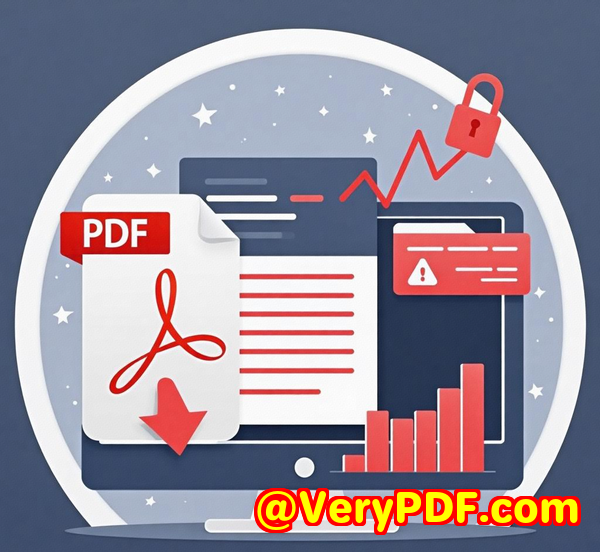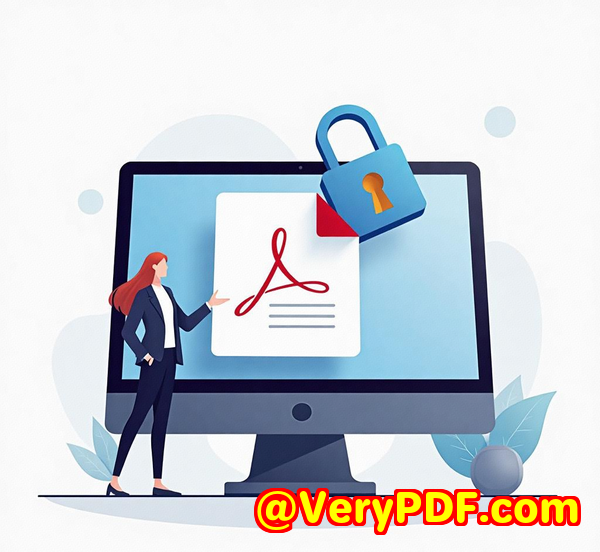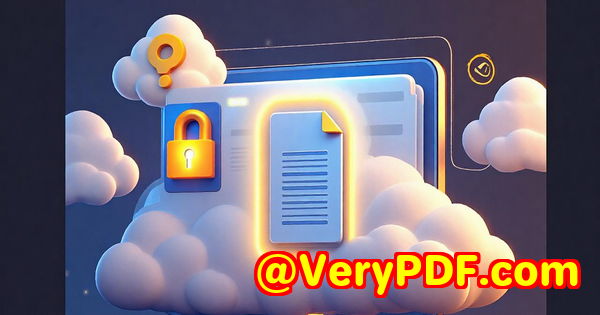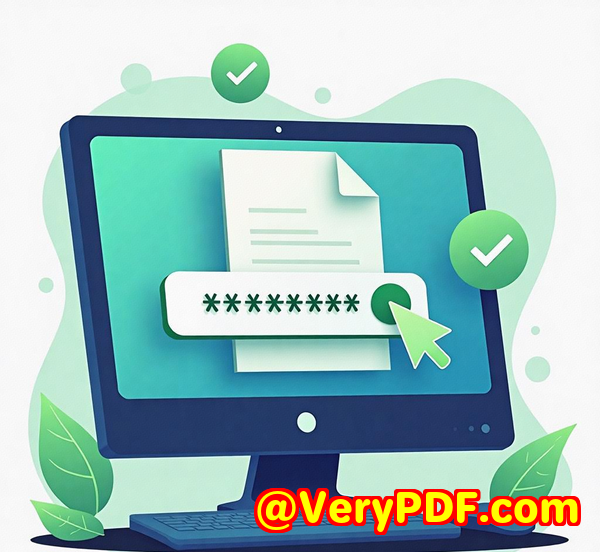How to add legal headers on thousands of PDFs in batch without errors or repetition
How to Add Legal Headers on Thousands of PDFs in Batch Without Errors or Repetition
Every time I've had to add legal headers to a pile of PDFs, it felt like an endless slog. Imagine this: you're staring down hundreds, maybe thousands, of files that need the same header slapped on top. Do it manually, and you risk typos, misplaced headers, or, worse, accidentally repeating or missing some entirely. I've been therewasting hours copying and pasting headers, only to find the final batch riddled with errors.

That's when I stumbled across the VeryPDF PDF Overlay Command Line and SDK. This tool changed the game for me. If you're like me, juggling tons of PDFs that need consistent, error-free headersespecially legal onesthis is worth a closer look.
Let me walk you through how it works and why it's been a lifesaver.
The Challenge: Adding Headers on Thousands of PDFs
Adding headers to PDFs sounds simple at first glance, right? But scale it up, and the challenge grows exponentially:
-
Consistency is king. Headers must be identical, perfectly positioned, and legible.
-
Batch processing is non-negotiable. Doing this one by one kills productivity.
-
No room for errors. Legal headers are crucial; a missing or duplicated header can cause compliance headaches.
-
Different PDFs might need different headers, or overlays, depending on department, region, or document type.
Most off-the-shelf tools either miss the mark on quality, require tedious manual setup, or rely on cloud services that raise privacy concerns for sensitive documents.
Discovering VeryPDF PDF Overlay SDK
I first came across VeryPDF's PDF Overlay Command Line and SDK while researching batch PDF processing solutions for a legal client.
This isn't just another PDF merger. It's built specifically to overlay one PDF onto another with precision and speed like stamping official letterheads, watermarks, or legal disclaimers across thousands of files without breaking a sweat.
And best of all? It's royalty-free and runs completely offline on Windows and Linux. That's a big win for anyone dealing with confidential documents or wanting full control over the workflow.
What Does the VeryPDF PDF Overlay SDK Do?
At its core, this SDK lets you superimpose (or "overlay") one PDF page on top of another.
Think of it as layering:
-
Your base PDF (e.g., a contract or report)
-
A header PDF (e.g., legal disclaimers, letterheads, or watermarks)
This isn't a crude merge where pages are just stuck together. It's a high-quality overlay that preserves fonts, vector graphics, and images meaning your final PDFs look professional and print-ready.
Who's this for?
If you're a developer, IT specialist, or operations manager responsible for handling large volumes of PDFs in industries like:
-
Legal firms needing consistent disclaimers
-
Financial institutions stamping compliance notes
-
Educational organisations marking confidential exam papers
-
Publishing houses applying custom templates
-
Print shops prepping customer files for high-quality output
This tool is made for you.
Key Features That Made a Difference for Me
I tested the VeryPDF PDF Overlay SDK on a recent project that required adding a legal header to thousands of contracts. Here are the standout features:
1. Batch Processing That Just Works
Running overlays on thousands of PDFs is no joke. VeryPDF's command line interface lets you automate the entire batch with simple scripts.
I wrote a shell script that looped through folders, overlaying the header PDF on every contract. No manual intervention, no missed files.
This saved me days of grunt work.
2. Precise Positioning & Conditional Overlays
The SDK supports custom coordinates for overlays.
That meant I could place headers exactly where the client's branding guidelines demanded top margin, centered, or even staggered depending on document size.
Plus, I could configure conditional overlays. For example, contracts from the sales team got a different header than the legal department.
3. Offline, Royalty-Free, and Cross-Platform
Handling sensitive legal documents means zero chance of leaking data to the cloud.
The SDK runs entirely offline, and supports Windows and Linux. My team deployed it on both platforms without hassle.
Also, a one-time royalty-free license made it affordable no recurring fees or nasty surprises.
How This Beat Other Tools I Tried
I've been around the block with PDF tools, so here's what I noticed compared to others:
-
Adobe Acrobat Pro: Great for manual overlays but doesn't scale well for batch automation, and pricey.
-
Online overlay services: Convenient, but unacceptable for confidential data and poor control.
-
Other SDKs: Some lacked precision, or the output quality suffered with fonts and vector graphics.
VeryPDF combined high-quality output with scriptable batch processing and offline usage exactly what I needed.
Real-World Example
On one project, I had to add a legal header stating "Confidential For Internal Use Only" plus a dynamic document ID on 10,000 contracts.
Using VeryPDF's SDK, I:
-
Created a header PDF template with placeholders for the document ID
-
Used scripting to generate personalized headers with unique IDs
-
Ran batch overlay across all contracts in under an hour
The final PDFs passed the client's stringent QA checks without a single header out of place or duplicated.
Why This Matters for Legal and Compliance Teams
If you're dealing with sensitive PDFs, consistent legal headers are your first line of defence.
Misplaced or missing disclaimers can lead to compliance risks, legal liability, or internal confusion.
With VeryPDF PDF Overlay, you automate this process reliably, letting your team focus on the work that matters not manual file editing.
How to Get Started
Getting up and running was straightforward:
-
Download the SDK from VeryPDF's website.
-
Use the sample scripts to understand command line syntax.
-
Integrate overlays into your existing automation or workflow.
-
Contact VeryPDF support for any customisation needs.
The SDK supports various programming languages, so whether you're scripting in Python, PHP, or C#, it slots in nicely.
Wrap-Up: Why I Recommend VeryPDF PDF Overlay SDK
I'd highly recommend this tool to anyone who deals with large volumes of PDFs that require precise, repeatable overlays especially for legal headers or branded letterheads.
It's fast, flexible, and rock-solid in quality. No more sweating over manual errors or tedious batch edits.
If you want to stop wasting hours and avoid mistakes in adding legal headers across thousands of PDFs, give this a try.
Click here to try it out for yourself: https://www.verypdf.com/
Start your free trial now and see how much time you can save.
Custom Development Services by VeryPDF
VeryPDF offers tailored development services to meet your specific PDF processing needs across Windows, Linux, and macOS.
Their expertise includes:
-
Custom SDK integration and workflow automation using Python, PHP, C/C++, C#, JavaScript, and more.
-
Developing Windows Virtual Printer Drivers for generating PDF, EMF, and image formats.
-
Capturing and monitoring print jobs from all Windows printers into formats like PDF, TIFF, PCL, and Postscript.
-
Implementing system-wide and application-specific hooks to monitor file access APIs.
-
Advanced document format processing, including OCR, barcode recognition, and table extraction.
-
Cloud-based document conversion, viewing, digital signatures, and DRM protection solutions.
If you require specialised solutions or custom workflows, reach out to VeryPDF's support center at https://support.verypdf.com/ to discuss your project.
FAQs
Q1: Can VeryPDF PDF Overlay SDK handle different headers for different documents in one batch?
Yes, it supports conditional overlays allowing you to apply different headers based on document metadata or naming conventions.
Q2: Does the SDK preserve the original PDF quality after overlaying?
Absolutely. It maintains vector graphics, fonts, and image resolution to ensure professional print-ready output.
Q3: Is the SDK compatible with Linux environments?
Yes, it runs natively on both Windows and various Linux distributions.
Q4: Do I need an internet connection to use the SDK?
No. The SDK operates fully offline, which is ideal for confidential document handling.
Q5: What programming languages does the SDK support for integration?
It provides command-line tools and APIs compatible with Python, PHP, C#, Java, shell scripting, and more.
Tags/Keywords
-
batch PDF overlay
-
legal headers on PDFs
-
PDF overlay SDK
-
VeryPDF PDF overlay
-
automated PDF header stamping



